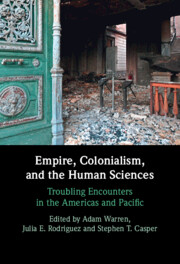The cover of this volume includes an image of the entrance to the National Museum of Brazil in Rio de Janeiro, after it was destroyed by fire in September 2018. The image is one of profound tragedy and loss for many communities in Brazil, but especially for those Indigenous and Afro-Brazilian communities whose treasured possessions were housed, in some cases without their permission, within the museum’s walls. Given that our decision to include it on the cover is likely to provoke discussion, we wish to clarify the reasoning behind this choice.
In the months following the fire, Brazilians took to the street to protest the conditions of government neglect and the budget cuts that led to this disaster. They rightly expressed outrage at the government’s failure to value and adequately protect the museum’s collection, which featured many items considered to be part of the nation’s patrimony, including artifacts, fossils, works of art, and even a meteorite. Around the world, the press articulated similar claims about the causes of the museum’s fire and its larger significance. The fire became a national tragedy and a tragedy for the world.
Missing from much of the national and global cosmopolitan debate about the disaster, however, was discussion of the museum’s place within a larger settler colonial framework that has long structured the Brazilian state’s relations with Indigenous peoples and other minoritized populations. While the fire was without question a tragedy, there is room to trouble what it meant in the first place for the nation to possess and exhibit the artifacts of Indigenous peoples, who continue to engage in survivance and assert their own forms of autonomy and sovereignty. Similarly, there is room to consider the role of the human sciences in this predicament while also acknowledging that many among the museum’s staff went to heroic lengths to rescue important items during and following the fire. In many respects, the museum has revealed how alienated settlers are from the reality of their colonial values, both before and after the fire.
Our hope is that this volume can invite further consideration not just of the history of the human sciences and their relations to empire and colonialism, but also of paths forward that focus on repair. The image on the cover includes a depiction of destruction, but the beautiful, open door also gestures toward the possibility of alternative futures.

